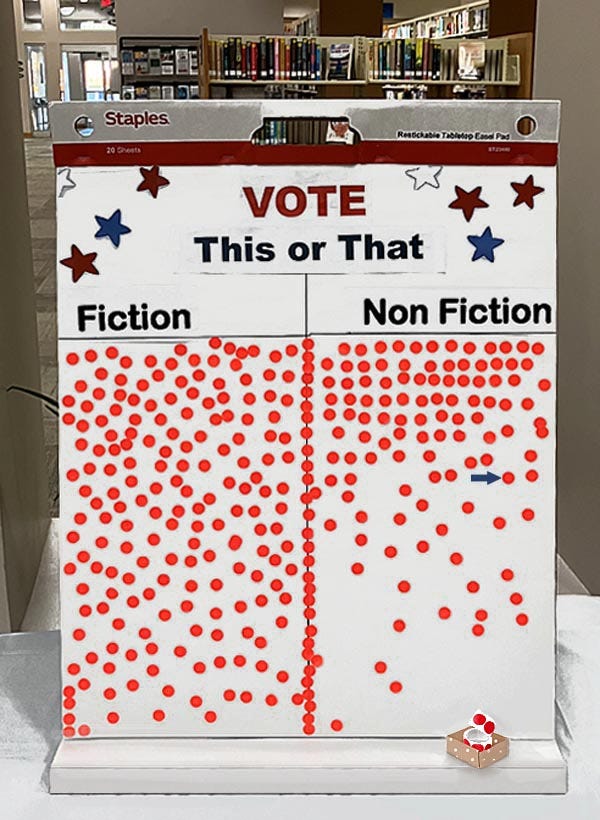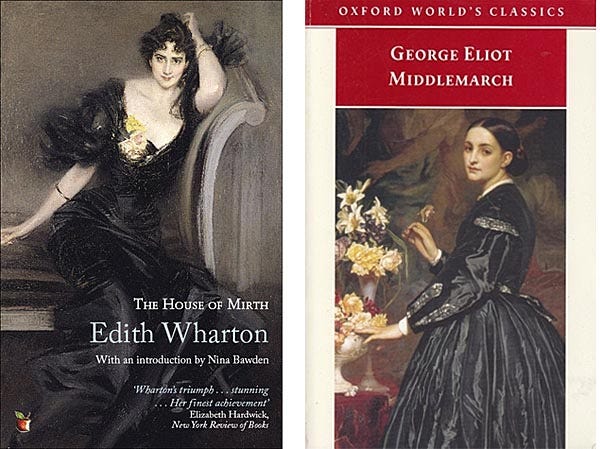Last election season, our public library invited patrons to vote for Fiction or Non Fiction. I took a sticky dot from the little box on the table and posted my preference (see the arrow I added to the photo below).

As you can see, fiction had more fans, as well as the more exuberant pattern of dots.
To me, this engagement was a good-natured relationship, not only with books, but also with the library staff and with each other. I like it that the voters’ attention was on the books instead of on ourselves. We weren’t at each other’s throats over the fact that both fiction and nonfiction books exist in the world. It’s even okay that most of us prefer fiction.
But about that fiction —
Since the election, I’ve found it hard to read novels. In times of lies and cruelty, it becomes as hard to stare at the truth as it is to stare at the sun. And as they say, you will find more truth in fiction than in nonfiction.
William Faulkner said,
The best fiction is far more true than any journalism.
I learned this lesson a few weeks ago. For the sake of my health, I decided to escape the wrenching daily news by reading classic novels by women. At the library I checked out Edith Wharton’s House of Mirth. But I stopped reading after Chapter 3, where Lily Bart is dead set on marrying the boring Percy Grice for his money. Surely, Lily, I thought, you realize you’re rudely misleading this pathetic old man!
Then, I gave up on George Eliot’s Middlemarch because I couldn’t go through Dorothea’s willfully blind marriage to the pompous Casaubon. He is completely oblivious to other people’s interests, which Dorothea takes to be his “adorable genuineness”.
These women are too real. In fact, I could meet one tomorrow! Given the state of this nation, I need sanity and a benign reality. I will not find these things in fiction.
So it was back to the library.
The Dewey Decimal 900s are safely in the past. So from the nonfiction section I checked out How Paris Became Paris: the Invention of the Modern City, and Berenice Abbott: a Life in Photography.
I loved learning how in the early 1600s the big new bridge in Paris over the Seine, the Pont Neuf, attracted crowds of people of all classes, day and night. It was the perfect place for a tire-manteau (cloak-puller) to steal a nobleman’s expensive manteau from off his back and then sell it to one of the many used-clothing shops located near the bridge. The thief might be dressed as an aristocrat himself, and “could clip your cloak in the wink of an eye.”

Centuries later in Paris, in the 1920s, 24-year-old Berenice Abbott took up with the photographer Man Ray, who had a modern studio and knew all the artists and socialites. She worked hard to learn from him and to make her own living. She later said,
My first pictures were pretty bad. Bad technically, underexposed. I didn’t think much about technique, but fortunately the French didn’t either.
I had a tiny little room in a very small hotel and you didn’t need much money in those days.
Charming!
I know I’m going to have to face reality again soon and join the resistance however I can, and I may even read some fiction. But in the meantime, it’s okay to rest for a few days in the library with the 900s, where history has already been made.






I love both, I'm afraid!